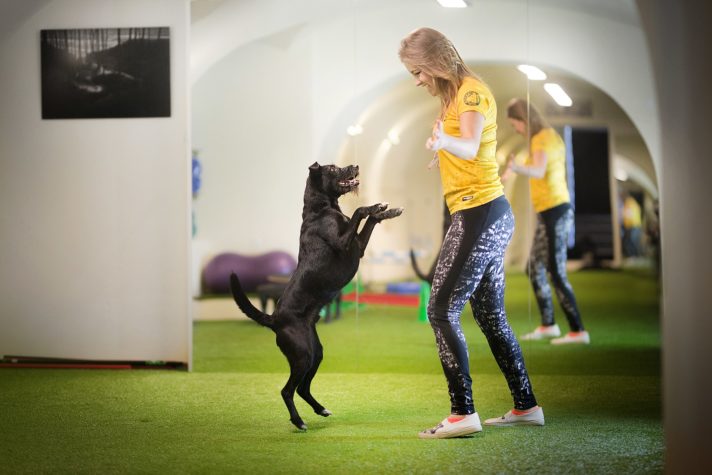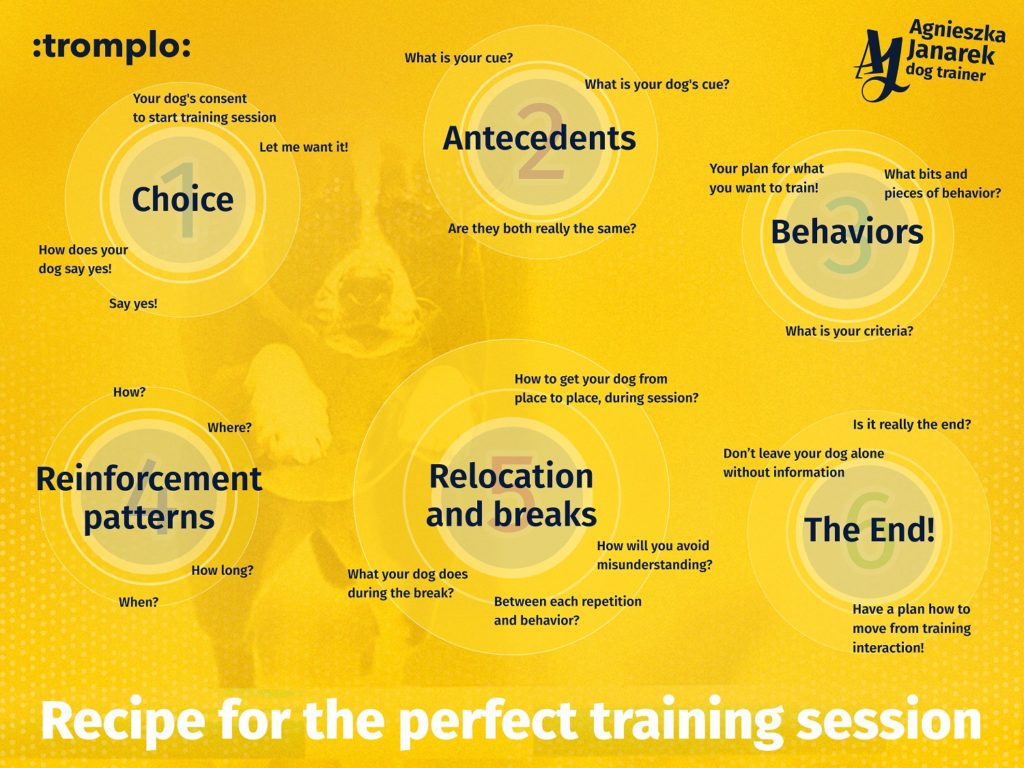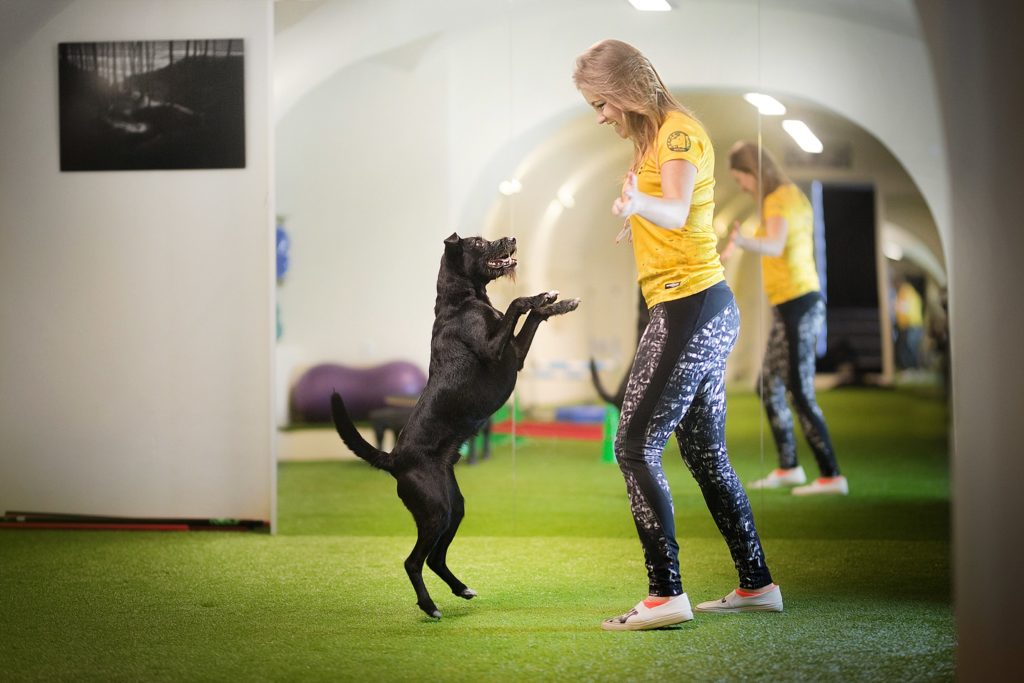
Can we find the formula for a perfect training session? No matter what sport, activity we do with our dogs?
I would say YES! It’s not a matter of what behaviors you teach, it’s a matter of how you do it. The perfect session takes into consideration everything that happens while you train with your dog. The perfect session has to be meaningful and fluent, whole session from the start till the end (which is not leaving your dog alone). Learning takes place all the time, not only when you teach sit or heeling. It takes place from the moment you and your dog start interacting together. No matter what sport you are in, no matter if you want to just teach your dog sit, your session can be perfect! It’s not about teaching spectacular behaviors! It’s about how you teach them, because you can teach SIT in a spectacular WAY!
This chart shows crucial elements of the training session! We will go through each one of them in this article. At the end you will see video examples of how a well structured session can help you and your dog achieve desirable outcome.

- CHOICE!
It means it matters HOW you start your sessions. CHOICE is empowering for everyone. That’s why I am huge advocate of teaching dogs, that they have a choice whether to engage in the interaction with us or not. Teaching dogs their behavior has influence on what we do, creates the most willingful training partners I have ever seen. Teach your dog he can say YES but also that he can say NO, and you will respect that. It’s a long term process, but it really is worth it. Being a trainer and a handler, means we are responsible for creating environment for our learners in which they will thrive. An environment to which they will be drawn to, eager to join the learning journey, because of the history of positive reinforcement we built together. Teaching choice means we are teaching our dog that his behavior has consequences. That is has a meaning, it can influence our behavior.
What does it mean to offer choice to a dog?
Consequences drive behavior. Choice is a consequence of the behavior your dog performs. You offer a choice to start interaction and by teaching your dog that he have options, to either accept your invitation or not and do other things.
For example one of my dogs jumps one, it was a behavior developed throughout a long time training, heavily reinforced and given a specific consequence. If and only if Gapcio jumps on me (it was previously learned behavior) I will start a training session. If he doesn’t we will go for a walk, I’ll give him snuffle mat or a kong. Or maybe we will just hang out together. Me standing in the formal position is a Sd telling my dog that a particular reinforcement (training session, training interaction which functions as a secondary reinforcement) is available now for specific behavior. If you have doubts that your dog may not be willing to choose you when choice is offered then you should strongly consider your training methods and analyze what is happening. Training is a top moment of my dogs day (together with the walk) they are anticipating our training interaction. If they don’t, I know something is wrong, usually health matter. Concept of choice goes down deeply into EO’s ( motivating and abolishing operations). Choice should not be forced, like for example, either you work with me or stay for a whole day in a crate. How to introduce the concept of choice? Join me for online course, Let Me Want It!
- AntecedentsWhen you teach a behavior you are probably using operant conditioning (unless you’re working on respondent conditioning trying to change your dog’s reflexes responses. Though classically conditioning takes place almost always when you work, that’s why we want to make it the best experience for the dog!). It means you are using A-B-C to your advantage. If it is just in the early learning phase or in the maintenance phase, you are using cues to evoke the behavior. Cues are antecedents. After learning process, they evoke behavior, they inform our dog that reinforcement is available for this particular response, right now.
The problem with cues is that often they are not what we think they are, at least not for our learner. We have to remember that our learner is the one who says what is relevant for him, not use. When you start preparing for the training session do a rehearsal in front of the mirror, look what cues are you giving, is it only a verbal sit? Or maybe a verbal sit together with a head tilt? Does it matter? Oh god YES! Your dog may consider your head tilt as the main important antecedent for sit. Not your verbal cue. When suddenly it is missing, guess what happens? ERROR from your perspective – but for your dog there was no cue, at least not the relevant one. Being aware of what we do is super helpful in providing clarity in your session, and clarity is one of the ingredients of thoughtful, fluent session.

- Behavior, that’s the meat and potatoes of the session!
Behavior is everything your dog does, the unwanted part also. Rules of learning apply to both, not only to desirable part. Our job during training session is to make sure learning process will be as fluent as possible and as joyful as possible. We have to know what we will be teaching and how. Define behavior, define parts of the behavior you want to teach, is your focus on outcome or on the process? You need to have a plan how will you make this behavior happen? Does your dog have the necessary skills to perform it. What method will you use and why (shaping, luring, moulding, targeting etc.). Have plan for progression, consider each and every step to your final goal. You don’t want to frustrate your learner and get tons of unwanted behaviors in the road to targeted behavior.
No matter if you teach voults, agility tunnels or heelwork IT’S ALL BEHAVIOR and as such relies on rules of learning. Get to know them, learn how your dog learns, dig into details to know why something works and why it doesn’t. Be a better trainer for your dog.
- Reinforcement patters.
When you already know what behavior you’ll work on, it’s equally crucial to consider reinforcement strategies and patterns. Exactly like with the cues, reinforcement has to be relevant for your learner. Not for you, if you are feeding treats and behavior is not repeating in the future you are using treats not reinforcement.
“We tried reinforcement, it didn’t work – that’s an oxymoron” dr. Martinez-Diaz, this quote perfectly sums up one of the most important attributes of reinforcement – IT’S FUNCTION. Reinforcement is defined by its function so no matter how tasty treats you use if it doesn’t help to strengthen behavior, it’s not reinforcement. Secondly it’s not only about WHAT you use but HOW and WHEN. Proper choice of delivery patters may either set your dog for the next behavior repetition and success, or on the contrary, make the next repetition practically impossible. By using different moments when you reinforce you can strengthen various qualities of the behavior. Would you use a marker? If yes, what kind? When, is it conditioned? This needs to be answered before you enter the training set up with your dog.
- Relocation and breaks.
If you read the point 3, you already know that behavior is happening all the time. Not just when you train. SO it happens between the repetitions, and during the break. If you are not paying attention to your dog, not only you are teaching him that you are unpredictable and that disengagement from the session is something normal, but you are actually reinforcing many unwanted behaviors, when your dog tries to get back your attention (and you are loading your treat poach or checking training notes). Or you can put on extinction trial many behaviors you do not wish to do it.
Also sometimes you don’t want to focus on particular part of the exercise, let’s say heelwork, you want to practice side steps, not the set-up and side steps. It makes your criteria cleaner, targeted to one thing only. How can you get your dog to a starting position? Look at the below video, it’s me and Gapcio, I want to focus exactly on side steps to the right, not on set ups, I simply use relocation to get him in heel position and start my targeted behavior.
Here I need to change the session set up, I don’t want my dog to offer behaviors in the meantime, I have a mat and stationary behavior for him during the break. You don’t want your dog to be just left hanging there without a clue what he is supposed to do. Clarity is reinforcing!
- THE END! Or… to be continued?
I would say the latter one. You don’t want to leave your dog in the middle of the interaction after the best moments of his life (this is how he should perceive the training session). It’s punishing! You want to continue fluency of transferring to a different activity. I want to smoothly change the environment, either go for a walk or offer snuffle mat, kong or toy, whatever your dog likes. The reason behind it is quite similar to the break. You don’t want your dog to be clueless what to do next.
Below:
session is focused on heel set ups from various angles. After Gapcio’s start behavior (jumping) we do treat tosses and go to break and mat, then I cue him to come to me where he is ready to offer first behavior I want – set up from perpendicular position to heel, we do it twice, I am using a delivery pattern to encourage looking up instead to my eyes. Then I change the angle by delivering the treat behind, I got two good reps so I move to set up from the front, all done by specific delivery of treat. When we are done with this one I move to the treat tosses, and mat break so that I can prepare for the next exercise – send away to the square. As you see I don’t want to focus on set ups here, I relocate Gapcio with treats in my hand to heel position, facing the box – ready for the next rep. Reinforcement is delivered in a way that encourages forward movement. How do I finish – with snuffle mat. Notice the session is very short, but I got everything I wanted, I had no unwanted behavior, everything was seamless, there was no hesitation from Gapcio what he is supposed to do now.
In the close future I will release a great conversation, with one the best trainers I have ever met, for one of the episodes of my new program The Dog Real Talk, which is coming soon! Conversation is about seamless training session, I can’t wait to share it with you!
